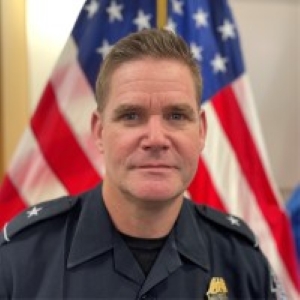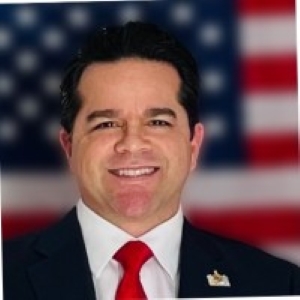
Fireside Conversation: CBP’s Efforts to Leverage DHS S&T to Operationalize Tech and Strengthen Border Security
Learn how the Department of U.S. Homeland Security (DHS) is leveraging commercial advances to strengthen border security, counter transnational criminal activity, and expedite lawful trade and travel. Hear how DHS Customs and Border Protection (CBP) and the DHS Science and Technology Directorate (S&T) are investing in automated, mobile, and remote solutions to equip security operators with critical tools to address complex needs. CBP and S&T will speak to ongoing and future initiatives, which call for greater private-sector partnerships and pathways for operationalizing science and technology, establishing commercial research agreements and accelerating the acquisition of relevant tech advances, which are needed to protect the movement of people, goods and services.
Speakers
-
 Gilley, JamesAssistant Director, Counter Network Division, U.S. Customs and Border Protection
Gilley, JamesAssistant Director, Counter Network Division, U.S. Customs and Border ProtectionJames Gilley serves as the assistant director of national programs at the National Targeting Center Counter Network Division (NTC CND), located in Sterling, Virginia. The CND is dedicated to leveraging U.S. Customs and Border Protection’s (CBP’s) unique authorities, extensive data holdings, intelligence capabilities and partnerships to identify, disrupt and degrade illicit networks, including terrorist and transnational criminal organizations, that pose threats to the U.S. homeland and its interests. In his role, Gilley oversees policy and stewardship of the Office of Field Operations (OFO) Targeting Enterprise, ensuring integrated program management, mission-aligned training and enhanced operational support. These efforts bolster OFO’s capabilities at local, regional and national levels to identify, target and mitigate national security and other transnational threats at the earliest stages.
Gilley brings a wealth of operational expertise in inspection, intelligence analysis and law enforcement activities, both at and between designated ports of entry, in alignment with the U.S. Department of Homeland Security’s Border Security Mission. His career includes eight years of local law enforcement experience in the Atlanta, Georgia, area and nearly 25 years of CBP service in Washington, D.C.; Jacksonville, Florida; Toronto, Canada; and Brownsville, Texas.
Beginning his CBP career in 2000 as a customs inspector in Brownsville, Texas, Gilley has held various leadership positions, including branch chief of the CBP Office of Intelligence and Investigative Liaison (OIIL) – Analysis Division’s National Post Seizure Analysis Team; assistant director for the OIIL Analysis Division’s Current Intelligence Section; and assistant director of analysis within NTC headquarters’ Targeting Business Division.
-
 Parker, JakeSenior Director of Government Relations, Security Industry Association
Parker, JakeSenior Director of Government Relations, Security Industry AssociationAs senior director of government relations for the Security Industry Association (SIA), Jake Parker leads the development of the association’s legislative and regulatory programs.
Jake came to SIA with more than 12 years of experience on Capitol Hill, most recently as legislative director for U.S. Rep. Tom Latham (R-Iowa), a senior member of the House Appropriations Committee.
He holds a bachelor’s degree in political science and history from Tennessee Temple University, a master’s degree in international relations from Salve Regina University and a graduate diploma in national security studies from the U.S. Naval War College.
-
 Wilhelm, ChristopherDirector of Industry Engagement and Technology Transition, Office of Innovation and Collaboration, Science & Technology Directorate, U.S. Department of Homeland Security
Wilhelm, ChristopherDirector of Industry Engagement and Technology Transition, Office of Innovation and Collaboration, Science & Technology Directorate, U.S. Department of Homeland SecurityDr. Christopher Wilhelm is the director of industry engagement and technology transition position is located in the U.S. Department of Homeland Security Science and Technology (S&T) Directorate’s Office of Innovation and Collaboration. Wilhelm provides executive-level oversight, guidance and outreach to discover new innovators and partner with them to develop or adapt solutions to meet operational research, development, test and evaluation needs and oversees the transfer and commercialization of capabilities to end users to foster the growth of the homeland security marketplace. He provides executive-level oversight and guidance to the management of key transition activities, the establishment of transition guidance and support tools, and evaluation of and refinement of process and support activities in accordance with S&T’s matrix
organization.Wilhelm most recently served as the program manager for the Technology Transfer Program at Naval Surface Warfare Center
Indian Head Division (NSWC IHD). In this position, Dr. Wilhelm served as the Command’s Office of Research and Technology Applications representative as well as the program manager for the Naval Energetic Systems and Technologies Program. Wilhelm was responsible for the management of, and strategic planning for, NSWC IHD in the S&T product area; providing technical and management advice; leading the development of; and maintaining cost, schedule and performance metrics; as well as acting as the primary interface between the customer(s) and the appropriate principal investigators and branch management.Wilhelm’s expertise was exemplified during other assignments to include team lead for the Explosive Detection Equipment Program and Counter Improvised Explosive Device Program in NSWC IHD’s D Department; first subject matter expert detail to Theater Explosives Exploitation at Combined Joint Task Force Paladin from September 2011 to February 2012, while stationed at Bagram Airfield Afghanistan. Wilhelm served as an active duty combat engineer in the United States Marine Corps from June 1994 to June 1998, earning personal awards up to and including the Marine Corps Achievement Medal.
Dr. Wilhelm received his Bachelor of Science from Manhattan College in May 2002, his doctorate in Chemistry from the State University of New York at Stony Brook in May 2009, and his Master of Science in systems engineering Management from Naval Postgraduate School in September 2019. Wilhelm has also authored several research articles, and invented/co-invented multiple patents.
-
 Kennedy, MatiasBranch Chief, Portfolio Management Branch, Operational Requirements Division, Science & Technology Directorate, U.S. Department of Homeland Security
Kennedy, MatiasBranch Chief, Portfolio Management Branch, Operational Requirements Division, Science & Technology Directorate, U.S. Department of Homeland SecurityMatias Kennedy is currently serving as the branch chief leading all portfolio managers within the Operations & Requirements Analysis Division of the Office of Science & Engineering at the U.S. Department of Homeland Security (DHS) Science & Technology (S&T) Directorate. He overseas a team which directly engages with DHS components to operationalized technology and serve as the S&T undersecretary’s principal representatives to all components. They are responsible for all engagements between the components and S&T. The team advocates for S&T resources to address component research and development gaps and oversees the R&D life cycle from intake through transition of capabilities to meet component identified needs.
Kennedy formerly served as S&T’s portfolio manager for the United States Secret Service (USSS) before his promotion to branch chief. Prior to joining S&T, he served as a senior program manager within the Technical Security Division of USSS. He was responsible for long range planning to include R&D, integration, acquisitions, budget planning and execution of spend plans for the Countermeasures Sub-Division, which included technical security, explosives, chemical and biological systems.
Before joining DHS, Kennedy served in the Marine Corps for 26 years. He led integrated engineering teams during combat support operations in both Iraq and Afghanistan. He retired after achieving the rank of chief warrant officer 4 in July 2017.


